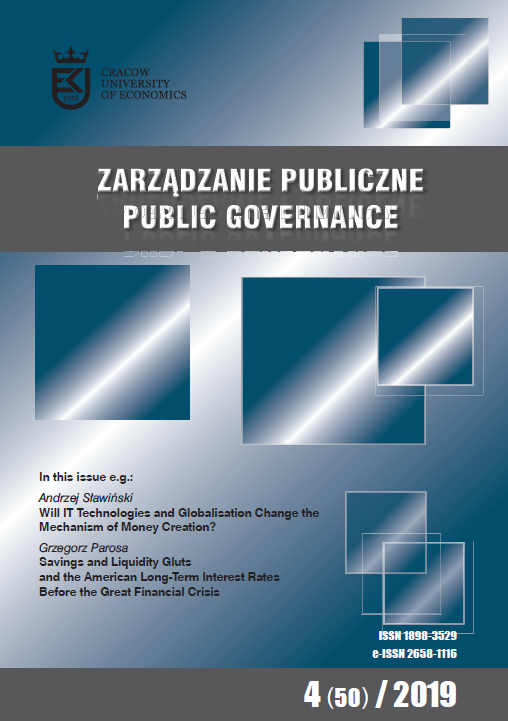Patent Races and Institutional Solutions of Health Care Policy in Developed Countries
DOI:
https://doi.org/10.15678/ZP.2019.50.4.02Keywords:
health care policy, patent, intellectual property, innovation, pharmacyAbstract
Objectives: To identify the methods of the state’s influence on health care system through intellectual property law mechanisms.
Research Design & Methods: Literature review based on the economic analysis of law.
F indings: An active role of the state in innovations in the pharmaceutical branch could bring benefits in the health care system. This role does not have to be limited to being a shareholder in selected projects (as a capital supplier).
Implications / Recommendations: The state is able to influence the speed, the structure, and the direction of patent races b y setting a real width of the patent (court verdicts) and patent height (patent office’s decisions) as well as the manner and the scale of compulsory licences usage.
Contribution / Value Added: Making changes in the speed, the structure, and the direction of patent races has got a strong impact on health policy. Appropriate influencing of the state on innovation activity in the pharmaceutical branch allows one to generate large benefits in the health care system.
Downloads
References
Baker, S., & Mezzetti, C. (2005). Disclosure as a strategy in the patent race. The Journal of Law and Economics, 48(1), 173–194.
Best, A., Greenhalgh, T., Lewis, S., Saul, J. E., Carroll, S., & Bitz, J. (2012). Large-system transformation in health care: A realist review. The Milbank Quarterly, 90(3), 421–456.
Denicolò, V. (2000). T wo-stage patent races and patent policy. The RAND Journal of Economics, 31(3), 488–501.
Dasgupta, P., & Stiglitz, J. (1980). Uncertainty, industrial structure, and the speed of R&D. The Bell Journal of Economics, 11(1), 1–28.
Grodzicki, M. J., & Geodecki, T. (2016). New dimensions of core-periphery relations in an economically integrated Europe: The role of global value chains. Eastern European Economics, 54(5), 377–404.
Harris, C., & Vickers, J. (1985). Perfect equilibrium in a model of a race. The Review of Economic Studies, 52(2), 193–209.
Judd, B. K. L., Schmedders, K., & Yeltekin, Ş. (2012). Optimal rules for patent races. International Economic Review, 53(1), 23–52.
Kalecińska, J., & Herbst, I. (Eds.). (2011). P PP w systemach ochrony zdrowia w wybranych krajach świata. Warszawa: Fundacja Centrum PPP.
Kikuzawa, S., Olafsdottir, S., & Pescosolido, B. A. (2008). Similar pressures, different contexts: Public attitudes toward government intervention for health care in 21 nations. Journal of Health and Social Behavior, 49(4), 385–399.
K odate, N. (2010). Events, public discourses and responsive government: Quality assurance in health care in England, Sweden and Japan. Journal of Public Policy, 30(3), 263–289.
Kudłacz, M. (2017). Miasto jako miejsce wytwarzania wartości. Zarządzanie Publiczne, 39(1), 97–113.
Kwaśny, J. (2017). Kondycja finansowa wybranych jednostek samorządu terytorialnego województwa małopolskiego w nowej perspektywie finansowej Unii Europejskiej. Nierówności społeczne a wzrost gospodarczy, 49, 228–250.
Mamica, Ł. (2018). Student theses oriented on solving business problems as an effective factor of firms’ innovativeness. International Entrepreneurship Review, 4(3), 275–286.
Możdżeń, M. (2015). To what extent do some fundamental concepts of New Institutional Economics help explain the governance phenomenon? Zarządzanie Publiczne, 31(1), 22–36.



